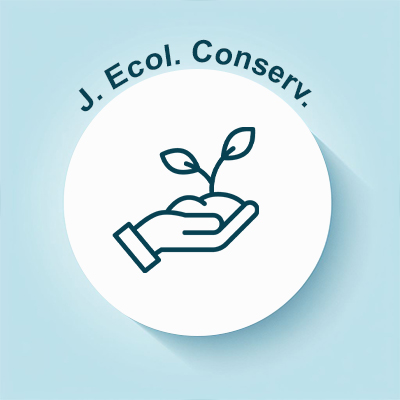
Journal of Ecology and Conservation
OPEN ACCESS
ISSN: 3048-5177

OPEN ACCESS
ISSN: 3048-5177
Conservation ecology is the scientific approach to managing and conserving natural resources, ecosystems, and biodiversity. It integrates ecological principles with conservation practices to understand species interactions with their environments and promote strategies for conserving biodiversity. Conservation ecologists are involved in restoring degraded ecosystems, conserving endangered species, and learning about human impacts on ecological systems. Conservation ecology contributes to the development of practical solutions to urgent conservation problems, including habitat loss, climate change, and invasive species.
The main goals of conservation ecology include:
Biodiversity Conservation: Biodiversity conservation is the primary aim of conservation ecology, focusing on safeguarding the variety of life on our planet. This involves protecting various species, their genetic diversity, and the ecosystems they inhabit. A diverse range of species contributes to the stability and resilience of ecosystems, while genetic diversity within species is essential for adapting to changing environmental conditions.
Habitat Preservation and Restoration: Habitat preservation and restoration are essential for protecting the natural environments where various species live and thrive. This involves preventing habitat destruction caused by factors like deforestation, urbanization, and agricultural expansion, which can result in species loss and ecosystem degradation. Restoration efforts aim to rehabilitate ecosystems that have already suffered damage, such as reforesting cleared areas, restoring drained wetlands, or cleaning up polluted sites. The ultimate goal is to maintain functional ecosystems that provide habitats for wildlife and deliver vital services like clean air, water, and soil fertility.
Mitigating Human Impacts: Human activities have greatly changed ecosystems around the globe due to pollution, deforestation, habitat fragmentation, overfishing, and other harmful practices. A key objective of conservation ecology is to mitigate these effects. This includes lowering pollution levels in air, water, and soil, reducing habitat fragmentation through initiatives like wildlife corridors, and preventing the overuse of natural resources.
Sustainable Resource Use: Sustainable resource use focuses on utilizing natural resources in a manner that prevents their depletion or destruction. It involves finding a balance between meeting human needs and preserving ecosystems and biodiversity.
Conservation ecology is guided by several fundamental principles:
Ecological Interdependence: All species are interconnected, and disrupting one species can have cascading effects on an ecosystem.
Ecosystem Approach: Conservation should focus on maintaining whole ecosystems rather than individual species.
Adaptive Management: Conservation strategies should be flexible and adjusted based on new scientific data.
Human-Nature Integration: Conservation efforts must include local communities to be effective.
Precautionary Principle: If an action might cause serious environmental harm, precautionary measures should be taken even if scientific certainty is lacking.
Conservation Strategies and Approaches
In-Situ Conservation (On-Site Conservation)
This involves protecting species in their natural habitats.
Protected Areas: Establishing national parks, wildlife sanctuaries, and marine reserves.
Community-Based Conservation: Local communities participate in managing and protecting natural resources.
Sustainable Land Management: Using farming and forestry practices that do not harm the environment.
Ex-Situ Conservation (Off-Site Conservation)
This involves conserving species outside their natural habitats.
Zoos and Botanical Gardens: Housing endangered species for breeding and education.
Seed Banks and Gene Banks: Storing genetic material for future restoration efforts.
Captive Breeding and Reintroduction Programs: Raising species in controlled environments and releasing them into the wild.
Local communities, particularly Indigenous groups, play a significant role in conservation.
Sustainable Resource Management: Indigenous farming and fishing techniques are often more sustainable.
Wildlife Protection: Community-led anti-poaching patrols help reduce illegal hunting.
Climate Adaptation Strategies: Traditional knowledge helps adapt to climate change.